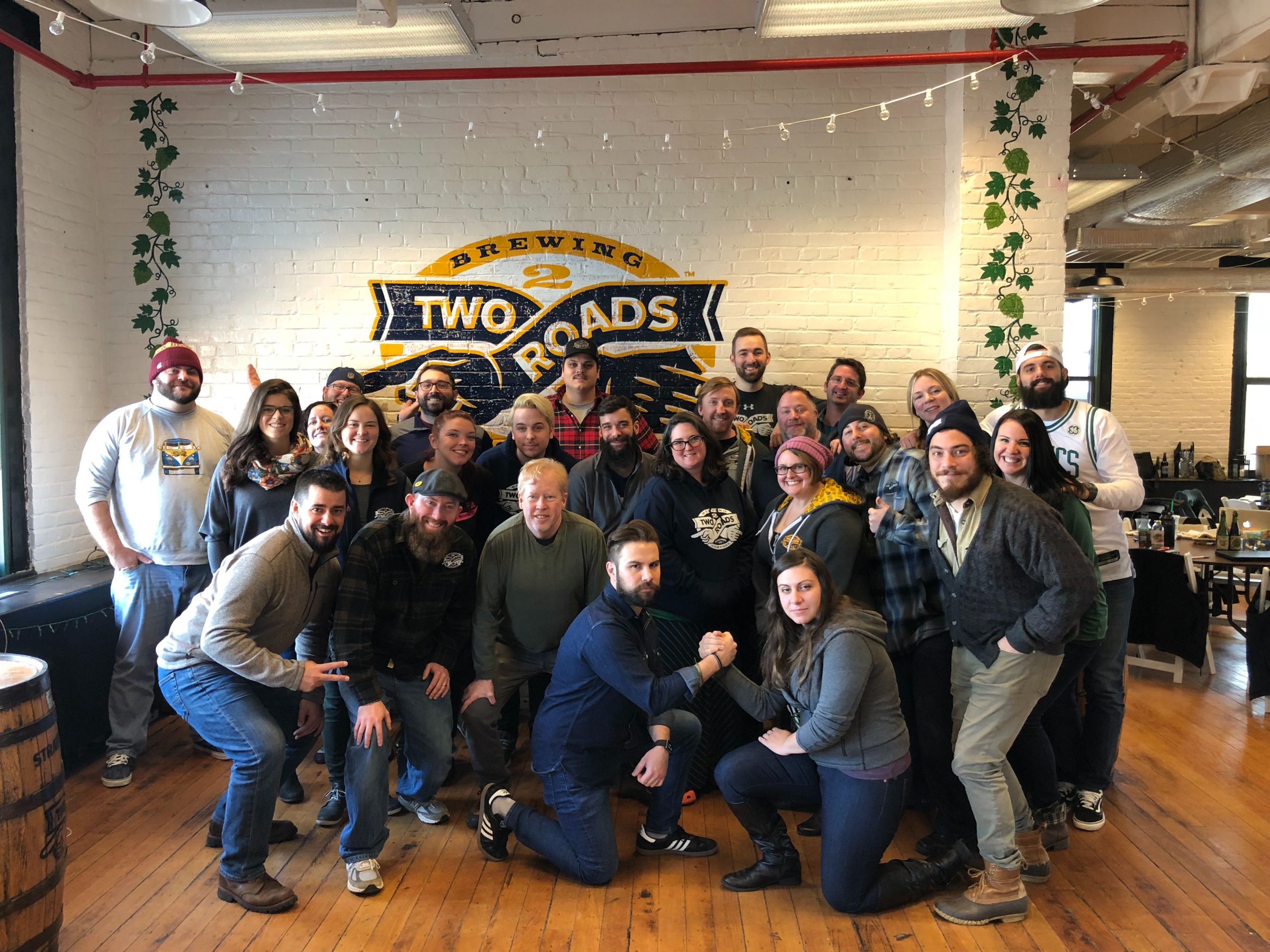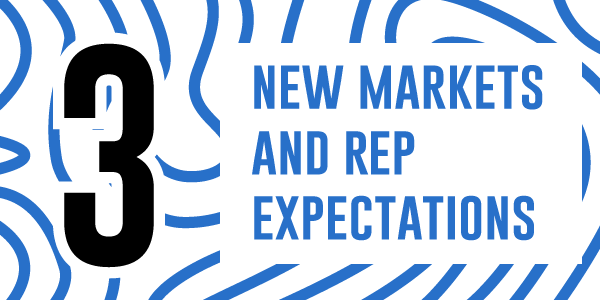3: New Markets & Rep Expectations
Lilypad’s Beer Sales Best Practices
This is the third article in the Lilypad Beer Sales Best Practices Series and Ebook curated from conversations with industry pros. The first five chapters have been released on the Lilypad blog and the next five chapters were released in an ebook in April 2020.
According to the Brewer’s Association, in 2010, there were 1,754 craft breweries in the U.S. That’s about one brewery for every 177,000 people. As of June 2019, the number of craft breweries had skyrocketed to 7,480– that’s a 326% increase in less than ten years. Today, millions of people all across the U.S. enjoy their favorite brews, with one brewery for every 44,000 people. Craft beer is more available and the competition on shelves is tighter than ever before.
So how do the most successful breweries keep up? What strategies do they use to move the needle in new markets and grow their brand adoption? We asked our panelists this question and found out that there is a contrast between the ideal approach and the reality of today’s market.
So what is the ideal approach? Use passionate reps to tell your story.
“I do think it’s a disservice to not send somebody into the market. You can’t just set your beer out there, have a big launch week, and hope it sells.”
Meghan Zachry, Director of Sales, Two Roads Brewing
Meghan Zachry, Director of Sales for Two Roads Brewing kicked off our discussion best by addressing the seemingly obvious, but often overlooked tactic. If you want to tackle a new market, rep placement is essential, and it brings a type of tangibility to your brewery and story. Great beer is only half the equation to succeed in a new market, and the value of a rep goes far deeper than a person capable of selling your beer. The entire panel agreed that reps in the market serve as ambassadors of your brand and can be the front lines of relationship building with your accounts and distributors.

The Two Roads sales team circa 2017 at our onsite training in Stratford.
As we discussed in our first blog, connecting your reps back to your story and making that story feel like their own is monumental in employee satisfaction. Further, supporting your culture with the appropriate training tools and technology, like Lilypad’s Resource Center, can bridge the gap between understanding culture and implementing it. As Meghan mentioned and the numbers above support, there’s a lot of great beer in the market today, but placing reps with a clear grasp of your mission and goals gives your brand an opportunity to align with distributors, retailers, and consumers.
Chris Russell, Vice President of Sales for CANarchy, one of the nation’s fastest-growing craft brands, expanded on this point, stating that it’s not just about sharing the story, it’s about having a passion for your brand:
“Nobody can tell the story better than the person that’s coming from the brewery and nobody’s going to be more passionate about it.”
Chris Russell, Vice President of Sales, CANarchy
At the end of the day, sales PowerPoints or product flyers are great, but they only go so far to telling the story of your product. Passion drives the rest. But of course, as Chris went on to address, you can’t just put fired-up reps out in the field and expect them to be successful automatically. Combining your company’s culture with clearly defined goals is the recipe for success. Yes, position your reps in the market and give them attainable, impactful goals using Lilypad, but as we discussed in the second part of this series, don’t just set them and forget them. Tell them exactly what you expect of them and track your reps’ strengths so you can place them where they’ll do the best.
That all sounds well and good, but then comes the reality check.
“I will acknowledge that our philosophy is we’d love to have a rep in every market we go into but resource wise we’re not able to do that. I imagine a lot of people in this room are probably in the same boat.”
Jason Ingram, National Sales Director, Left Hand Brewing
Part of operating in the more competitive beer landscape we mentioned earlier is that breweries are running on tighter margins than ever before. It is unrealistic to expect breweries today to be able to throw reps at every market they distribute in. In Jason’s eyes, the only path forward is to get more out of fewer reps and to put a priority on aligning with your distributors and retailers who will support the brand when you’re not around.
“Then it becomes, how are you able to best serve that market and bring value to your wholesaler without having someone there? Is it making quarterly visits or monthly visits, and so forth?”
Jason Ingram, National Sales Director, Left Hand Brewing
We know, we know – rely on distributors?! All too often distributors can feel like the antagonist in your story of market victory, but Jason states that this narrative should change. It’s time to start looking at distributors as partners, like Samwise Gamgee to our collective Frodo. Just hear us out. Frodo wouldn’t have made it all the way to Mordor without Sam’s help. Sure, they fought sometimes, and Frodo thought he could do better without Sam, but in the end, he needed Sam’s loyalty and understanding to deliver the ring. The same is true of your relationship with your distributors. You need their loyalty and understanding, or else your product won’t get delivered to the retailer and consequently, the consumers.

As a rep responsible for covering multiple markets, distributor management and national account management is the difference maker. In order to build the kind of partnerships that help you support multiple markets, you need to be thinking outside of yourself.
“I often want to ask that person that is complaining about the wholesaler, what are you doing to really bring value to them?”
Jason Ingram, National Sales Director, Left Hand Brewing
Your relationship with distributors should be symbiotic, with goals that benefit both parties. Like Jason said, you need to understand the goals of your partners, see how your internal goals align, then set expectations with your reps accordingly. What are you doing to communicate effectively? Have you figured out a cadence of in person and digital communication that works for them? Through Lilypad, you can unify your efforts and facilitate cross-tier communication that benefits both your team and your distributor. Using the Distributor Recap tool, your team can outline activities, events, placements, and even things like out-of-code products then pass them to your distributor reps in a digestible, useful way. When you focus on things that make your distributor successful, they will become a comfortable extension of your brand when rep coverage is short. Plus, they can be invaluable in forming chain-relationships on the retailer level.

We’ll dig much deeper into the idea of both distributor partners and chain sales later in this series. For now, you know the secret to expanding into a new market – put a passionate rep in the field whenever possible. Make sure they know your company’s culture and arm them with tools that help them hit meaningful goals. When you can’t have a full time rep in the market, double down on bringing value to your distributor and leverage those relationships to drive more sales.
“There’s a lot of great beer out there, there’s a lot of great breweries who have people in the market, and you have to keep share of mind with your distributors, with your accounts, and with your consumers.”
Meghan Zachry, Director of Sales, Two Roads Brewing
Actionable takeaways:
- Place reps in the field who are well versed in your company’s culture – they will champion your brand to the distributor, retailer, and consumer.
- Make the most out of reps in the field by setting measurable goals and tracking rep wins through Lilypad.
- Truly take the time to understand your distributors’ goals so you can bring value to them when you’re relying on them in new markets.
- Coach your reps to identify the cadence of communication that works best for their distributors and retailers, then cater to it in order to maintain share of mind.
- Once you’ve identified the ideal ways to work with your partners, use tools like Distributor Recaps to more efficiently communicate.


